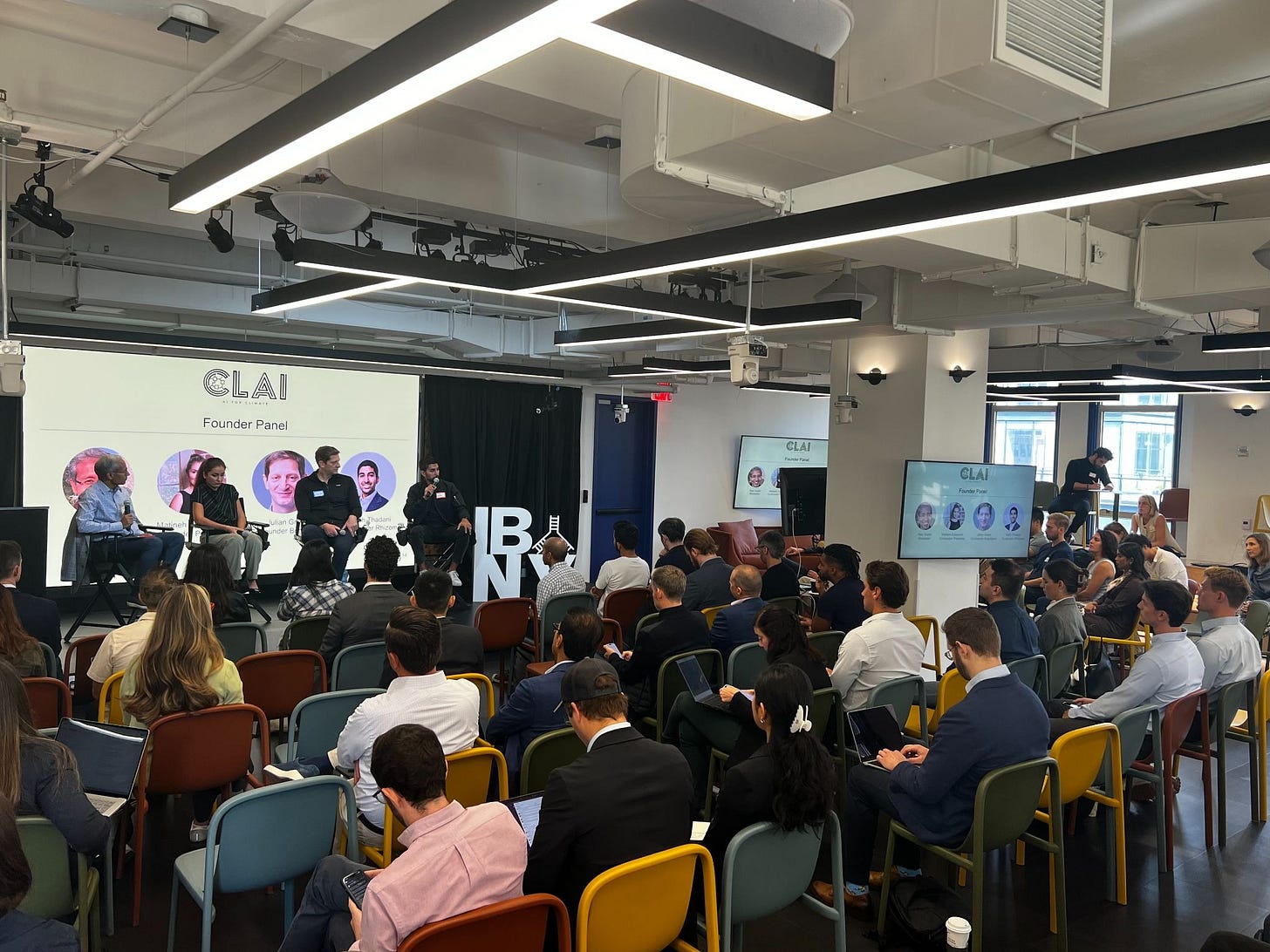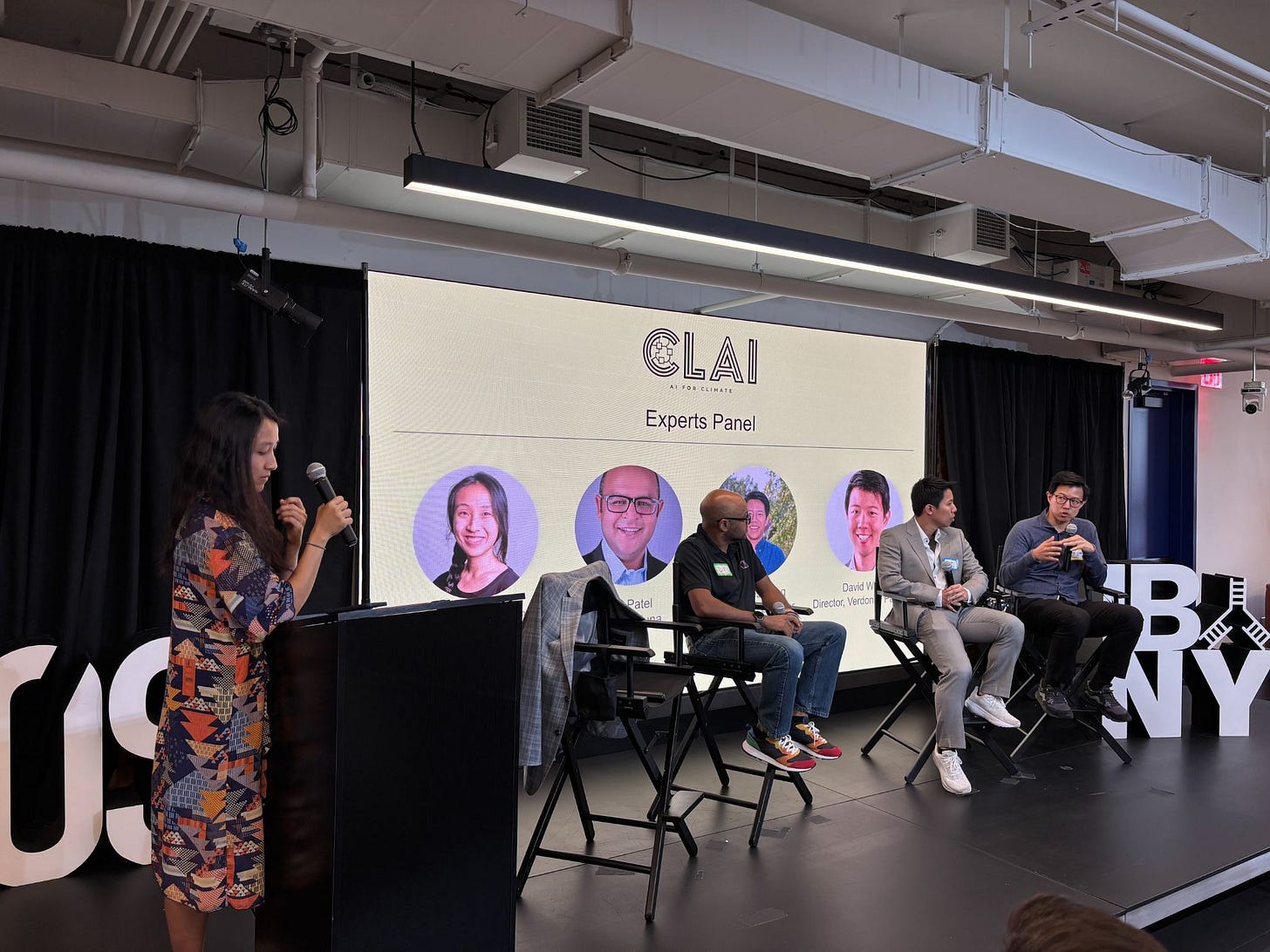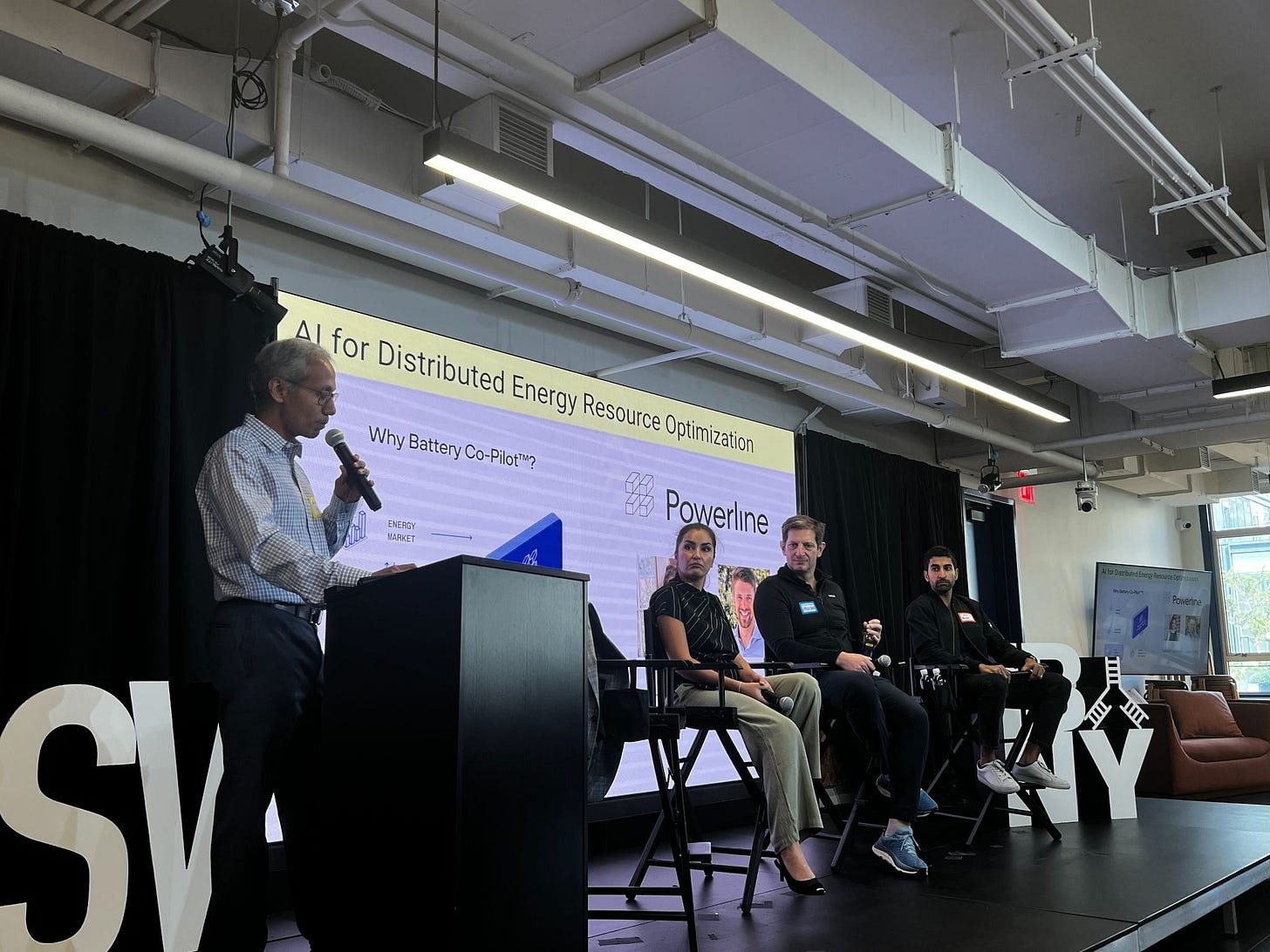Amplifying What Works: Reflections from NY Climate Week
We had the privilege of hosting two impactful events at NY Climate Week: AI for Energy & Energy for AI and The 10-Year Future: AI, Energy, and Carbon Pricing. At CLAI Ventures, we believe the AI–Energy nexus will define the next decade of climate innovation, and we’re grateful to the innovators, investors, and operators driving this conversation forward.
Much of the week’s attention centered on the growing energy footprint of hyperscalers and what can be done about it. As CTVC put it, this year felt less like “Climate Week” and more like “Energy AI” week. Yet across every discussion, the focus was on what can be done now, actions that don’t wait for public infrastructure to catch up.
Together with partners SOSV and Molecule Ventures, our panels convened leading thinkers charting the next decade of AI and energy innovation.
The Shadow of “Speed to Power”
AI infrastructure is growing faster than the grid can adapt. Interconnection queues remain years long, transmission projects continue to stall, and permitting delays are slowing down deployment. Yet innovators are finding ways to bridge the gap with tangible, near-term solutions.
Some key takeaways from the discussions:
Speed to power is everything, at least for now. Hyperscalers, data centers, and AI infrastructure need electricity faster than traditional grid buildouts can deliver, driving interest in behind-the-meter renewables and colocation solutions.
Bottlenecks remain severe, but the Duke University Nicholas Institute report is sparking smart conversations on freeing grid capacity through load curtailments by data centers. Just 0.25% curtailment (one day a year) could enable 76 GW of new load capacity on the U.S. grid. While mandates may fail, a market-based incentive strategy could succeed.
AI is both consumer and catalyst. Its power demand is significant, but as we are seeing it is accelerating innovation in weather forecasting, grid optimization, and climate adaptation.
Electrification of everything continues to drive load growth. As the IEA notes, data centers may account for less than 10% of global electricity demand growth by 2030, but their concentrated locations make them uniquely hard to integrate into existing grids compared to EVs or air conditioning.
Amplifying What Works
As many in the climate space know, we don’t lack solutions; what’s missing is consensus and coordination. The Duke University study showed that small shifts in load flexibility can unlock massive grid potential. A market-based solution could offer the incentives necessary for voluntary curtailment.
Many solutions discussed this week were decentralized and actionable today:
Colocation of compute and clean energy, like what Soluna does with co-locating data centers with renewable energy could reduce waste from curtailed renewable power and improve overall energy efficiency.
Battery storage for resilience and flexibility allows for better integration of intermittent renewables, reduced grid congestion, and enhanced reliability during peak demand.
Looking Ahead: The Next 10 Years
David Babson (XPrize Foundation), Asher Goldman (Generate), and Grant Opperman (Molecule Ventures) shared perspectives on AI, energy and carbon markets and how they’ll evolve over the next 10 years. Key themes included:
Innovation as a Lever: David highlighted how initiatives like the XPRIZE Carbon Removal and CO₂ Conversion prizes spur step-change innovation and align public imagination with scalable climate breakthroughs. AI, guided by thoughtful policy and market incentives, can become a force for climate abundance, powering both progress and sustainability.
Financing the Energy Transition: Asher shared how Generate Capital’s $10B platform finances and operates critical low-carbon infrastructure, from batteries to renewable fuels, emphasizing that policy signals, like LCFS credits, remain crucial to scaling.
AI’s Dual Role: While AI’s energy footprint is rising, it also strengthens climate solutions, enhancing carbon measurement, reporting, and verification (MRV), optimizing renewables.
Carbon Market Evolution: Grant outlined how transparency, liquidity, and robust policy incentives will shape the next phase of environmental markets, particularly as AI improves MRV and credit integrity.
Energy for AI
David Wang (Verdonck Partners), Charles Yang (Center for Industrial Strategy), and Dip Patel (Soluna) explored how AI’s energy needs are already reshaping system planning and renewable deployment. Key insights included:
Computing Meets Clean Energy: Dip Patel shared how Soluna colocates data centers with wind, solar, and hydro projects to harness excess renewable energy. By operating “behind the meter,” Soluna monetizes curtailed power while easing grid congestion, turning wasted generation into profitable compute. Dip emphasized that flexibility and modularity are essential to balancing intermittent renewables with constant AI workloads.
Financing the Transition: David Wang explained how Verdonck Partners helps developers navigate changing project economics, rising financing costs, and shifting risk appetites under new regulatory regimes. While Power Purchase Agreements (PPAs) remain the industry backbone, David highlighted growing creativity in deal structures and an increasing need for investor education as projects face interconnection delays.
Grid Bottlenecks and Policy Gaps: Charles Yang drew on his DOE experience to highlight structural challenges: multi-year transformer backlogs, slow permitting, and limited domestic manufacturing capacity. He contrasted the U.S. grid’s constrained capacity with China’s rapid infrastructure scaling, calling for a coordinated national strategy to expand transmission and apply AI to supply-chain optimization and advanced materials.
AI for Energy
Our portfolio companies—Rhizome, Powerline, and Brightband—demonstrated how applied AI is driving practical climate impact, from grid resilience planning to optimized battery deployment and advanced weather modeling.
AI for Weather: Julian Green (Brightband) shared how high-resolution, AI-driven weather models are redefining forecasting accuracy, enabling smarter renewable integration and grid resilience planning. His team’s open innovation approach is helping accelerate breakthroughs across the broader AI-for-weather ecosystem.
AI for Storage: Matineh Eybpoosh (Powerline) described how AI acts as a copilot for grid-scale batteries, dynamically optimizing operations and economics. She underscored the importance of explainable AI, giving operators transparency and trust in mission-critical energy decisions.
AI for Grid: Mishal Thadani (Rhizome) discussed how predictive AI enables utilities to proactively manage wildfire and climate risks, transforming adaptation from a reactive to a data-driven, preventative practice. He also highlighted the commercial realities of selling to utilities and how early traction is validating the model.
We’re deeply thankful to our partners and everyone who joined the conversation.
The takeaway: we already have the technology to build a resilient, abundant energy system. The task now is to align the incentives, narratives, and capital to scale it.




